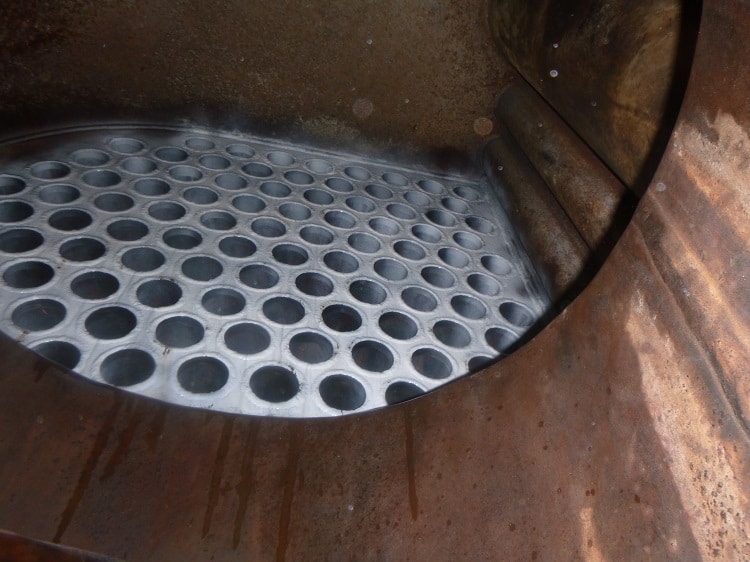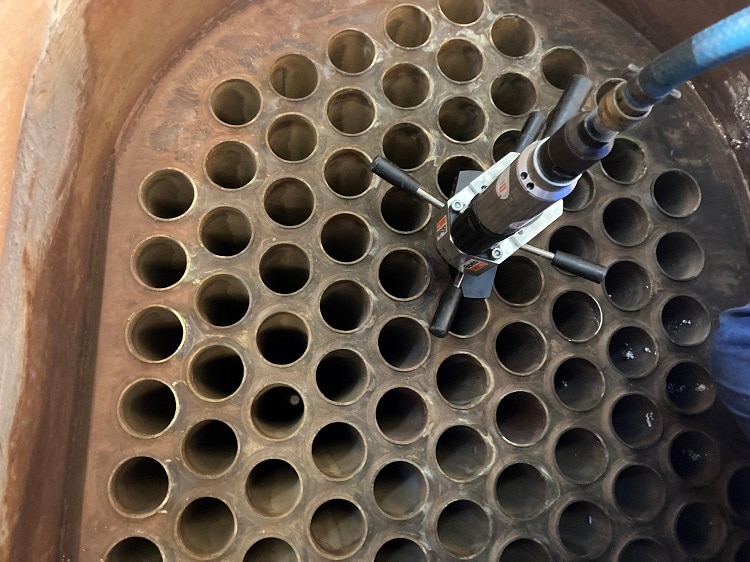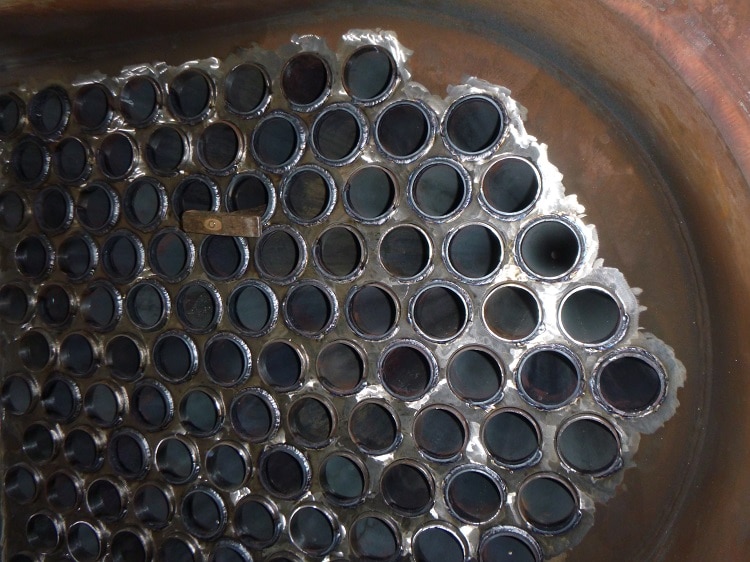Dortmund University of Technology
Case Study: Boiler Revision
Second train completely re-piped
The Technical University of Dortmund heats its university buildings with the hot water that three hot water boilers heat in a rotation principle. One boiler is always set to standby to compensate for possible failures. One of the three boiler bodies has hadvarious damages in its second trainseveral times in the past. To preserve the boiler‘s functionality, the customer decided to have the entire second pass re-piped.
The task
The repair work meticulously prepared by Hagelschuer was very extensive and costly. All 204 pipes required (DN 65 s = 3.2 mm) were already shortened by the fitters in the factory hall in Buldern to exactly 4150 mm in length and the welding seams were prepared.


The repair measures
They then started work on the boiler body on site in Dortmund. First, they milled out the tubes of the second train at the front and rear turning chambers using a pneumatic boiler tube cutter. After that, the tubes in the boiler body were cut in the middle and transported out through the manhole. After the old pipes were completely removed, they ground and cleaned the two mirror plates. This ensured that the old weld metal was completely removed. Using MT testing, one of the Hagelschuer welding experts checked both mirror plates for crack indications.
After the MT inspection of the mirror plates, the fitters individually reinserted all 204 prepared tube sections into the boiler from the front turning chamber. After each individual pipe section was aligned and tack welded, the fitters welded them together in multiple layers using the TIG (141) welding process. Under the supervision of an external expert, the boiler passed the final strength test and could be put back into operation.
- 204 pipes (DN 65 s = 3.2 mm)
- MT Testing
- TIG (141) Welding process

About the Technical University in Dortmund
Since its foundation 52 years ago, the Technical University of Dortmund has gained a special profile, with 17 faculties in natural sciences, engineering, social sciences and cultural studies. The university has about 32,400 students and 6,700 employees, including about 300 professors. The curriculum includes about 80 courses, including classical as well as innovative subjects, some unique offerings, and a broad-based teacher education program for all types of schools.


